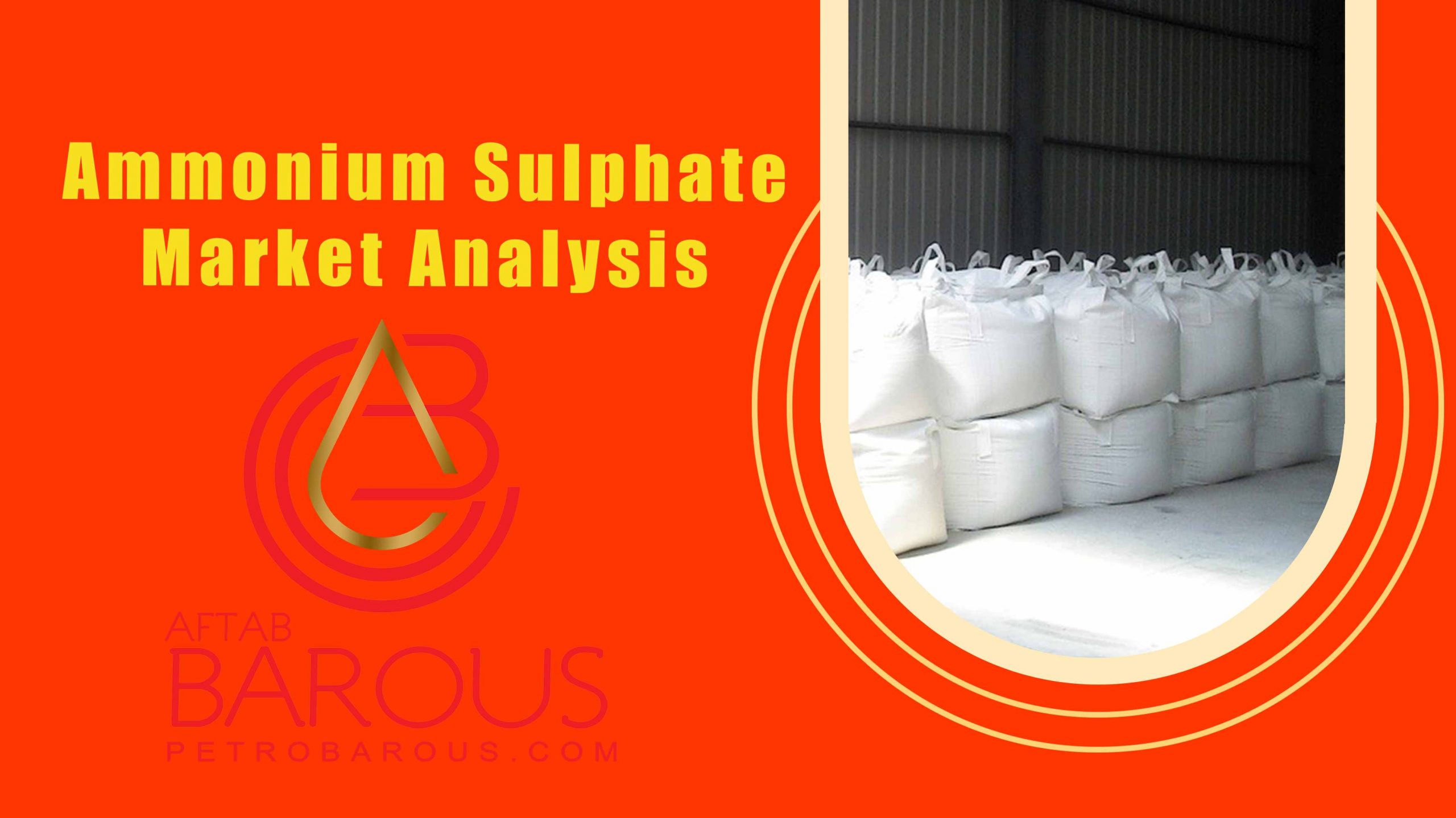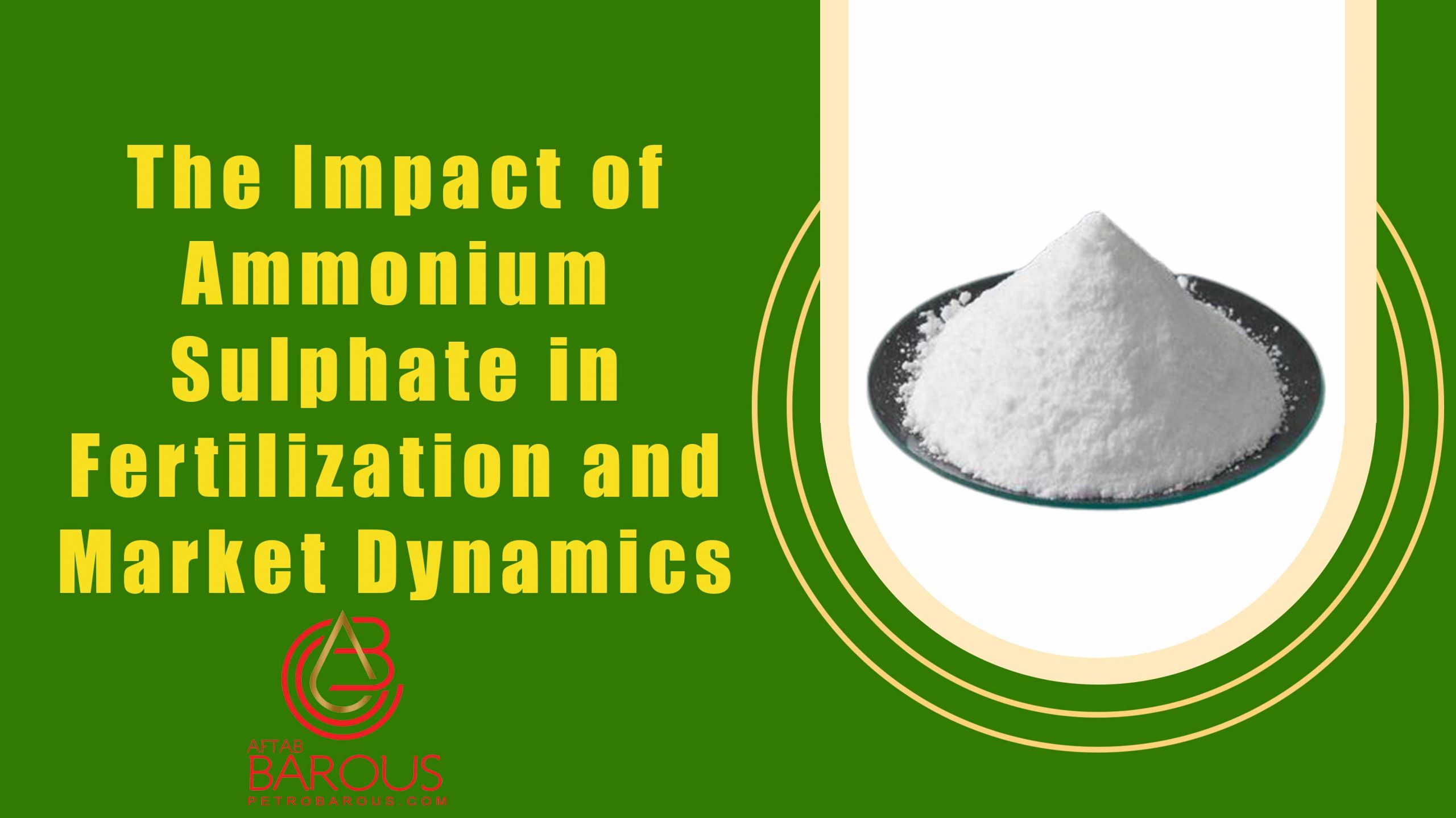Stay informed on the dynamic landscape of Ammonium Sulphate prices with our comprehensive analysis of market trends across Asia, Europe, North America, Latin America, and the Middle East & Africa. In this article, we delve into the price movements and forecasts for July-September 2023 in each region, providing valuable insights for industry stakeholders.
Asia:
During the third quarter of 2023, the Asian Ammonium Sulphate markets experienced fluctuating price patterns. Initially, Chinese industries aimed to fortify their manufacturing capacities, resulting in positive demand projections both domestically and internationally. Stable demand and price forecasts supported Ammonium Sulphate production. However, unforeseen weather disruptions and disturbances in India’s rain cycles ahead of the sowing season led to a sudden decline in demand from the agriculture sector. Existing inventory stocks influenced regional prices, causing a temporary setback. Despite a rebound by the quarter’s end, market sentiments remained mixed.
Europe:
In Q3’23, the European Ammonium Sulphate price analysis was predominantly underwhelming due to a downturn in the agriculture sector. However, as the quarter concluded in September, the onset of the winter season prompted increased consumer sector activities, leading to a surge in market demand. Consequently, the Ammonium Sulphate price graph exhibited an upward movement after a prolonged period of decline.
North America:
The North American Ammonium Sulphate market witnessed a slow start in Q3’23, gradually picking up momentum by mid-quarter due to improved offtakes from consumption sectors. However, the dominance of stockpiles soon reversed this trend, causing the market momentum to shift downward. The overall scenario was characterized by wavering price sentiments, reflecting the dynamic nature of the market.
Conclusion:
Navigating the Ammonium Sulphate market requires a nuanced understanding of regional dynamics and global influences. As we move forward, staying abreast of these trends becomes crucial for industry participants. The third quarter of 2023 showcased the impact of both anticipated and unforeseen factors on Ammonium Sulphate prices, emphasizing the need for continuous monitoring and adaptive strategies in this dynamic market.
A Closer Look at Price Trends in the First Half of 2023
In this analyst insight, we delve into the intricate dynamics of the Ammonium Sulphate market during the first half of 2023. Procurement Resource suggests that the market is poised to continue its fluctuation, with market demands emerging as the primary driving force shaping the industry landscape.
Ammonium Sulfate Fertilizer 🌟 Production, Benefits, and Industrial Uses
🌟 Contact Us (WhatsApp)
Ammonium Sulphate Price Trends by Region:
Asia:
Throughout the first half of 2023, the Asian Ammonium Sulphate market experienced fluctuating prices, predominantly lingering on the lower side. The market exhibited a subdued atmosphere characterized by bearish sentiments. Weak demands from downstream fertilizer and chemical industries exerted downward pressure on Ammonium Sulphate prices, exacerbated by declining feedstock prices. The overall performance of Ammonium Sulphate in the region reflected a challenging market scenario.
Europe:
Parallel to its Asian counterpart, the European Ammonium Sulphate market showcased similar trends during the first half of 2023. Prices teetered mostly on the lower side, exhibiting a declining trajectory. High inventories and limited procurement based on immediate requirements by suppliers contributed to the prevailing market conditions. Moreover, reduced upstream costs, influenced by decreases in freight and fuel prices, added to the challenges faced by the industry. The lingering economic repercussions of the Russia-Ukraine war continued to impact downstream demands, maintaining a weakened and disrupted market throughout H1’23.
North America:
The North American Ammonium Sulphate market mirrored the global declining trends in the first half of 2023. Prices faced downward pressure due to lackluster demands, and the decreasing costs of feedstock ammonia and sulphuric acid intensified the overall cost pressure. A combination of factors, encompassing upstream and production costs, alongside subdued downstream demands, collectively contributed to the downward trajectory of Ammonium Sulphate prices in the region.
Conclusion:
The first half of 2023 witnessed the Ammonium Sulphate market grappling with a complex interplay of factors, from weakened demands to declining feedstock prices. As we look ahead, market participants need to navigate these challenges adeptly, considering the influence of global events and regional dynamics. Understanding the intricacies of the market trends during this period is crucial for stakeholders to formulate informed strategies in an environment marked by fluctuation and uncertainty.
Analyzing Ammonium Sulphate Price Trends in the Second Half of 2022
In this analyst insight, we examine the unfolding trends in Ammonium Sulphate prices during the second half of 2022, shedding light on the factors influencing its market dynamics. As per insights from Procurement Resource, the prevailing trend of declining prices is expected to persist in the coming months, driven by high inventories and a lack of imminent increases in market demands.
Ammonium Sulphate Price Trends:
The second half of 2022 witnessed a notable impact on Ammonium Sulphate prices, primarily influenced by the downward trajectory in energy prices resulting from stabilizing geopolitical conditions. This directly affected nitrogen-based products, with a particular focus on ammonia. Natural gas, a key component in ammonia production and the primary energy source for global fertilizer production, played a pivotal role in shaping these trends.
Manufacturers faced a dual challenge of price pressures due to product stockpiling and cautious buying behaviors among consumers. High fertilizer prices contributed to demand destruction, prompting many farmers to reduce their planned acreage for the upcoming sowing season. The prices of ammonium sulphate experienced a sharp decline from 1980 RMB/MT in July to 1100 RMB/MT in August 2022. Towards the end of September, there was a temporary incline, with prices averaging 1380 RMB/MT.
The fourth quarter presented mixed patterns in ammonium sulphate prices. November saw a slight increase as the market trading atmosphere improved, accompanied by a rise in inquiries. However, downstream procurement decisions continued to hinge on demand, with manufacturers adopting a cautious approach in response to the wait-and-see attitude of buyers. The uptick in urea prices benefited the ammonium sulfate market, leading to an average price of around 1403 RMB/MT in December 2022.
Conclusion:
The second half of 2022 brought about a complex interplay of factors influencing Ammonium Sulphate prices, ranging from energy price fluctuations to cautious market behaviors. As we move forward, stakeholders in the industry must remain vigilant, adapting strategies to navigate the evolving landscape marked by uncertainty. Understanding the nuances of these price trends provides valuable insights for informed decision-making in an ever-changing market scenario.
Analyzing Ammonium Sulphate Price Trends: Insights into Market Dynamics in 2022
In this analyst insight, we delve into the nuanced landscape of Ammonium Sulphate prices, guided by insights from Procurement Resource. The prevailing trend suggests that the price of ammonium sulphate is expected to maintain a firm stance with periodic fluctuations. A key contributor to this stability is the heightened demand for winter storage procurement, anticipating a longer-term upward trajectory in prices.
Price Trends for the Second Quarter of 2022:
Asia:
Throughout the second quarter of 2022, the Chinese ammonium sulphate market exhibited stability. Government restrictions on exports to meet domestic requirements for ammonia, sulfuric acid, and various fertilizers played a crucial role in stabilizing prices. The equilibrium between supply and demand in the domestic market led to stable ammonium sulphate prices, averaging 1450-1520 RMB/MT in Shandong.
Europe:
Europe witnessed a surge in inflation across all sectors during this period. Supply disruptions and a cautious approach towards Russian cargo contributed to soaring price trends for ammonium sulphate. Export VAT and restrictions imposed by Russia and China further diminished domestic supply, driving prices higher.
North America:
The price trends in the American market mirrored those in Europe, with high prices attributed to a substantial supply gap resulting from decreased import quantities from Europe. Additionally, farmers in the US faced challenges from climate change, labor shortages, and rising fertilizer and pesticide prices, contributing to inflation. The average price in the US domestic market stood at FOB 435 USD/MT in the Midwest.
Price Trends for the First Quarter of 2022:
Asia:
In the first quarter of 2022, the operating rate of ammonium sulphate dropped, creating a light market environment. The price of coking-grade ammonium sulphate weakened, and the market remained relatively quiet with standard transactions. A notable drop in prices, ranging from 50 to 180 RMB/MT, was observed. Mainstream ex-factory prices in Shandong for coking-grade ammonium sulphate averaged 1,300-1,380 RMB/MT on February 14, while in Hebei, the range was 1,280-1,380 RMB/MT, and it was 1400 RMB/MT in Heilongjiang.
The Impact of Ammonium Sulphate in Fertilization and Market Dynamics
🌟 Contact Us (WhatsApp)
Conclusion:
The intricate dynamics of Ammonium Sulphate prices in 2022 reflect a delicate balance between supply, demand, and external factors. As the market navigates through these fluctuations, stakeholders should remain vigilant, leveraging insights to make informed decisions in a landscape characterized by periodic shifts and emerging trends.
Unraveling Ammonium Sulphate Price Trends: A Comprehensive Overview of 2021
In this comprehensive analysis, we delve into the intricate price trends of ammonium sulphate during the dynamic year of 2021. From regional market dynamics to global influences, we explore the factors that shaped the market landscape and drove fluctuations in prices.
Price Trends for the Fourth Quarter of 2021:
Asia:
The closing quarter of 2021 witnessed a significant surge in ammonium sulphate prices in Asia, reaching an impressive value of 25,450 INR/MT. The heightened demand for fertilizers during the rabi crop season played a pivotal role in driving the chemical’s market in the agricultural sector. Furthermore, ammonium sulphate found crucial applications in the pharmaceutical industry, particularly in vaccine production.
The rise in prices for both coal and fertilizers prompted China to restrict exports, impacting ammonium sulphate prices, given China’s prominent role as a major sulphate supplier. South Korea faced logistical challenges due to export limitations imposed by China, leading to increased prices in domestic markets.
Europe:
Market sentiments in Europe soared during the fourth quarter of 2021. Supply constraints in Russia resulted in increased consumption of domestic natural gas, driving up costs. External factors, including Hurricane Ida causing supply disruptions from the US and challenges posed by a heatwave in the United Kingdom and several other European countries, contributed to disruptions in wind generation and elevated natural gas prices in the region.
North America:
Global scarcity of nitrogen fertilizer significantly increased ammonium sulphate prices in North America, driven by soaring ammonia prices in the final quarter of 2021. In the preceding quarter, slow ammonia prices were attributed to limited availability of upstream sulphur and nitrogen, a consequence of the aftermath of Hurricane Ida.
Price Trends for the First, Second, and Third Quarters of 2021:
[Please provide additional information for the first, second, and third quarters of 2021, and I will be happy to assist you in creating a detailed analysis.]
Dynamics of Ammonium Sulphate Prices in Asia: A Detailed Analysis of 2021
In this comprehensive analysis, we unravel the intricate dynamics that shaped the ammonium sulphate market in Asia throughout the year 2021. From fluctuating demand patterns to external factors impacting pricing, we delve into the nuanced landscape of this essential chemical.
Market Trends in Asia:
The Asian market experienced subdued demand from the agriculture industry, despite robust export demands from Europe and the US. The aftermath of the lunar holidays in China led to diminished inventories, contributing to a 10.4% increase in average ammonium sulphate prices, reaching 163.6 USD/MT in the region.
Similar trends were observed in India, where demand surged from Europe and the US. However, disruptions in trading routes between Europe and Asia slightly increased prices in India during the second quarter of 2021.
China witnessed initially muted demand from major importing countries, which later improved as farming and economic activities gained momentum. The demand scenario from India remained uncertain during this period. European countries reduced ammonium nitrate purchases from China due to skyrocketing prices. In contrast, the Indian market demonstrated resilience, with major fertilizer producers like FACT maintaining strong margins even amid the pandemic. The second quarter experienced robust growth, with ammonium sulphate prices ranging between 221 USD/MT and 294.3 USD/MT in June 2021.
Surge in Third Quarter Prices:
The third quarter of 2021 witnessed a substantial surge in prices across the Asia-Pacific region. The firm ammonia supply in China drove ammonium sulphate prices higher. Soaring energy prices in September impacted fertilizer production, raising concerns about stocking activities among farmers. In India, the market responded with a notable increase, pushing prices in Mumbai from 319 USD/MT to 384 USD/MT.
Comprehensive Guide to Ammonium Sulfate
🌟 Contact Us (WhatsApp)
Monsoon Impact and Global Ammonia Shortage:
The onset of the monsoon season sustained high demand in the domestic market. The global shortage of ammonia contributed to increased prices, impacting the overall pricing of the chemical. High production costs prompted major manufacturers to transfer these costs, resulting in a further increment in prices.
Conclusion:
The year 2021 showcased a dynamic ammonium sulphate market in Asia, influenced by global and regional factors. From supply disruptions to increased demand, the industry navigated through challenges, reflecting the resilience and adaptability of the market players. Understanding these intricate dynamics provides valuable insights for stakeholders navigating the ever-evolving landscape of ammonium sulphate prices in the region.
Dynamics of Ammonium Sulphate Prices in Asia: A Detailed Analysis of 2021
In this comprehensive analysis, we unravel the intricate dynamics that shaped the ammonium sulphate market in Asia throughout the year 2021. From fluctuating demand patterns to external factors impacting pricing, we delve into the nuanced landscape of this essential chemical.
Market Trends in Asia:
The Asian market experienced subdued demand from the agriculture industry, despite robust export demands from Europe and the US. The aftermath of the lunar holidays in China led to diminished inventories, contributing to a 10.4% increase in average ammonium sulphate prices, reaching 163.6 USD/MT in the region.
Similar trends were observed in India, where demand surged from Europe and the US. However, disruptions in trading routes between Europe and Asia slightly increased prices in India during the second quarter of 2021.
China witnessed initially muted demand from major importing countries, which later improved as farming and economic activities gained momentum. The demand scenario from India remained uncertain during this period. European countries reduced ammonium nitrate purchases from China due to skyrocketing prices. In contrast, the Indian market demonstrated resilience, with major fertilizer producers like FACT maintaining strong margins even amid the pandemic. The second quarter experienced robust growth, with ammonium sulphate prices ranging between 221 USD/MT and 294.3 USD/MT in June 2021.
Surge in Third Quarter Prices:
The third quarter of 2021 witnessed a substantial surge in prices across the Asia-Pacific region. The firm ammonia supply in China drove ammonium sulphate prices higher. Soaring energy prices in September impacted fertilizer production, raising concerns about stocking activities among farmers. In India, the market responded with a notable increase, pushing prices in Mumbai from 319 USD/MT to 384 USD/MT.
Monsoon Impact and Global Ammonia Shortage:
The onset of the monsoon season sustained high demand in the domestic market. The global shortage of ammonia contributed to increased prices, impacting the overall pricing of the chemical. High production costs prompted major manufacturers to transfer these costs, resulting in a further increment in prices.
Conclusion:
The year 2021 showcased a dynamic ammonium sulphate market in Asia, influenced by global and regional factors. From supply disruptions to increased demand, the industry navigated through challenges, reflecting the resilience and adaptability of the market players. Understanding these intricate dynamics provides valuable insights for stakeholders navigating the ever-evolving landscape of ammonium sulphate prices in the region.








